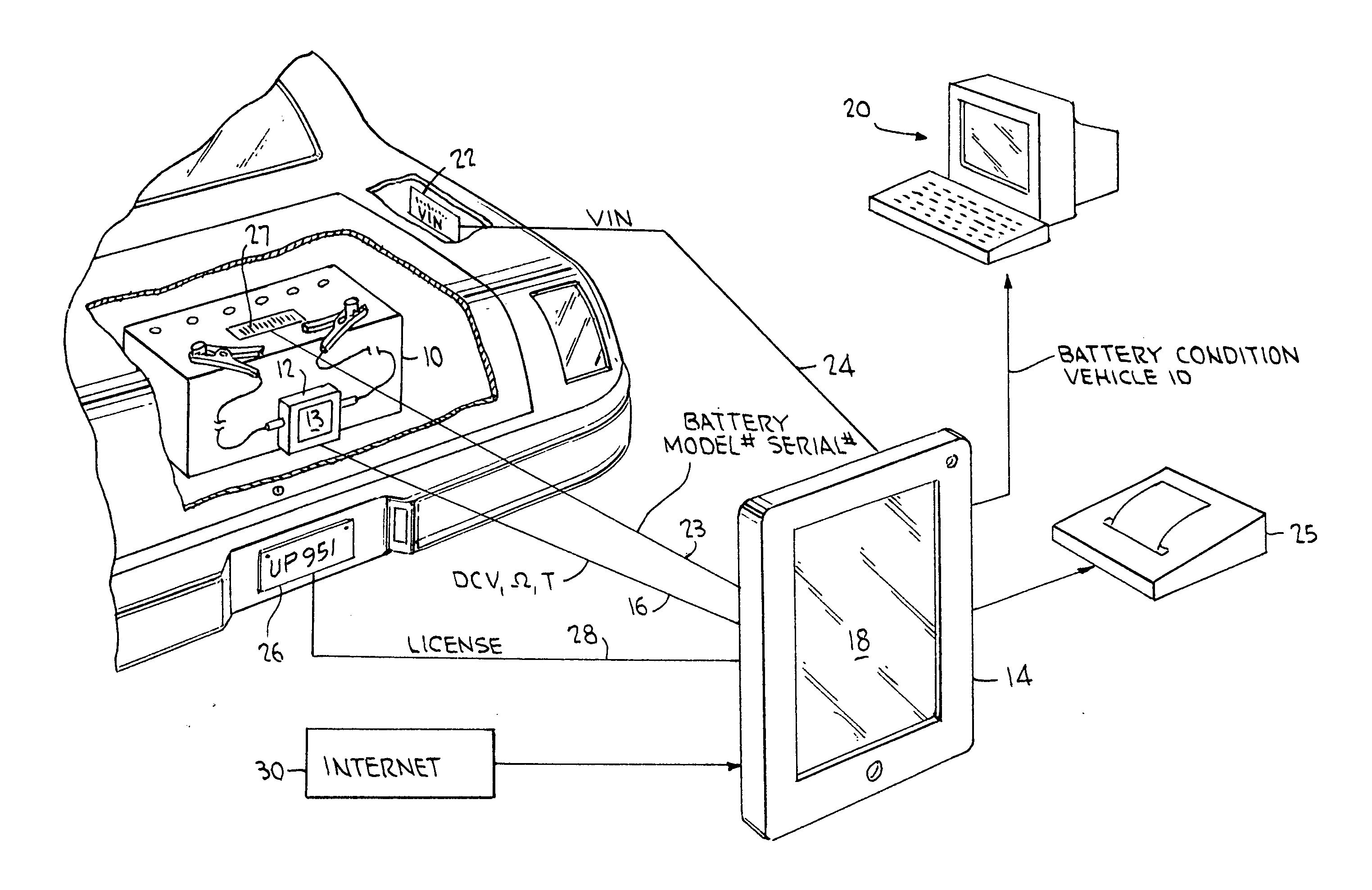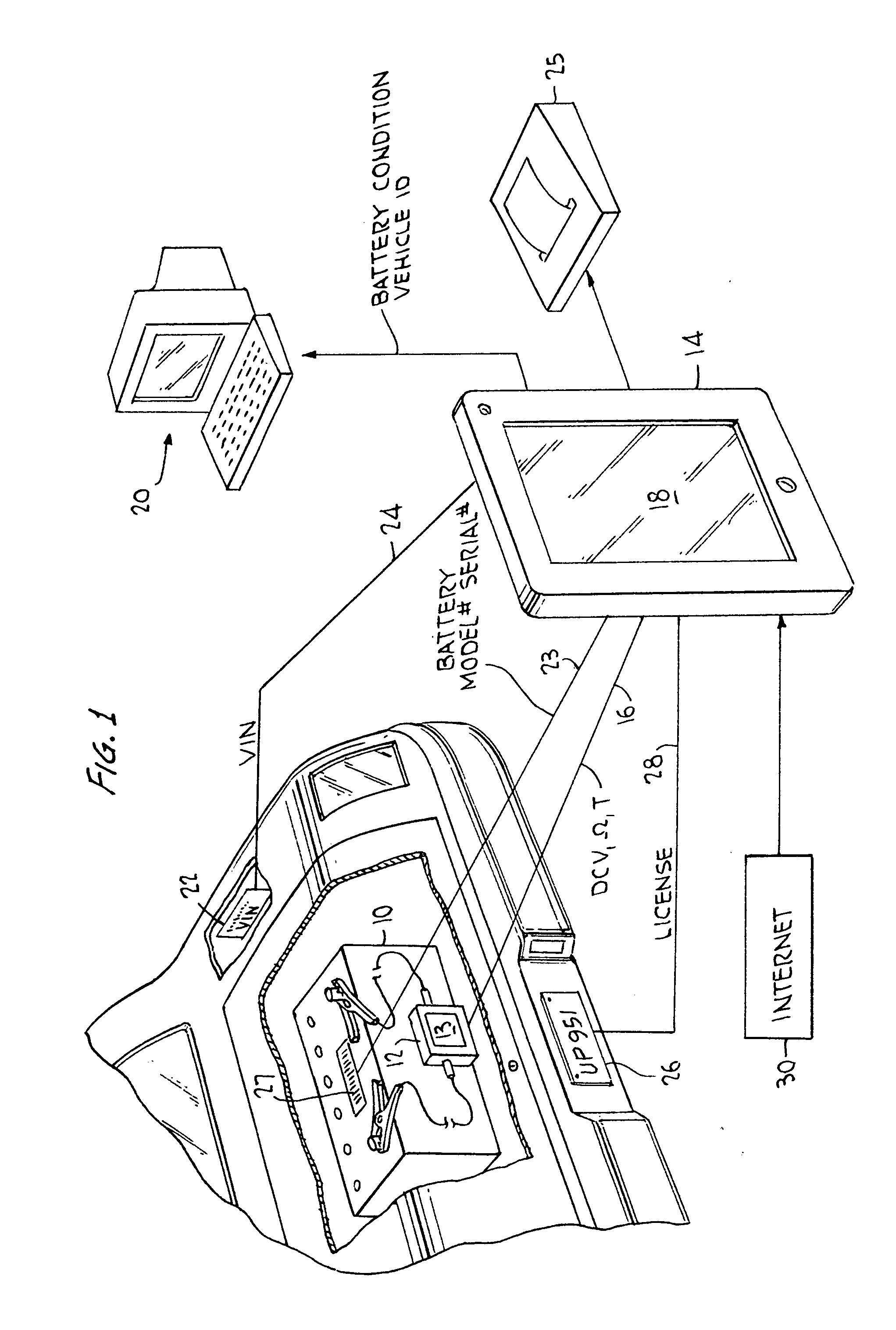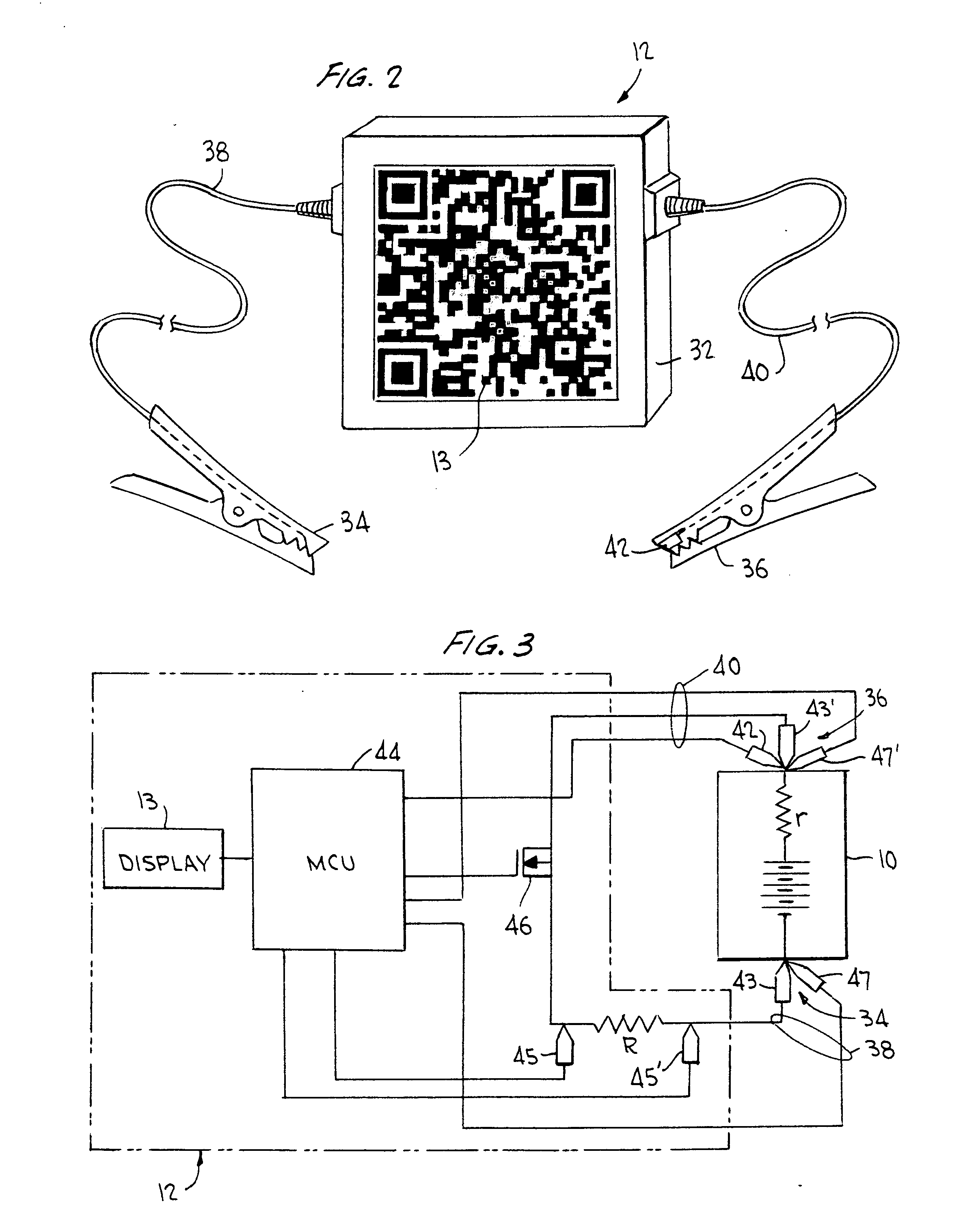Tester for equipment, apparatus or component with distributed processing function
a technology of equipment and components, applied in secondary cell servicing/maintenance, secondary cell testing, instruments, etc., can solve the problems of insufficient measurement values derived from batteries to determine battery health or condition, inability to determine whether an ocv of 6.4v is indicative, and general cost of ohmic test devices, etc., to increase the range of battery types and configurations, improve the effect of performan
- Summary
- Abstract
- Description
- Claims
- Application Information
AI Technical Summary
Benefits of technology
Problems solved by technology
Method used
Image
Examples
Embodiment Construction
[0082]As mentioned above, FIG. 1 shows an overall view of a tester with distributed measurement and analytical functions according to the invention. The tester is shown in the context of testing a vehicle battery, but the invention is not limited thereto, as more fully detailed below.
[0083]As discussed above, the basic function of measuring battery parameters, typically the open-circuit voltage (OCV), ohmic value and temperature of a battery 10 is carried out by a simplified battery testing device 12, when “powered-up” by being connected to the battery 10. The technique employed for measuring the ohmic value may be generally as described in the Huang patents referenced above, and as summarized below, or otherwise. Values other than those mentioned may also be measured, as noted above.
[0084]In a more sophisticated test, the user may be prompted to start the vehicle's engine after the basic parameters mentioned above have been measured. This will result in additional measurements, typ...
PUM
 Login to View More
Login to View More Abstract
Description
Claims
Application Information
 Login to View More
Login to View More - R&D
- Intellectual Property
- Life Sciences
- Materials
- Tech Scout
- Unparalleled Data Quality
- Higher Quality Content
- 60% Fewer Hallucinations
Browse by: Latest US Patents, China's latest patents, Technical Efficacy Thesaurus, Application Domain, Technology Topic, Popular Technical Reports.
© 2025 PatSnap. All rights reserved.Legal|Privacy policy|Modern Slavery Act Transparency Statement|Sitemap|About US| Contact US: help@patsnap.com



